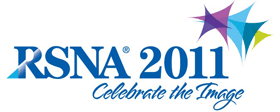
Abstract Archives of the RSNA, 2011
Supriya Gupta MBBS, Presenter: Nothing to Disclose
Sean Doyle, Abstract Co-Author: Nothing to Disclose
Samridhi Gupta, Abstract Co-Author: Nothing to Disclose
Thomas J. Schultz BS, Abstract Co-Author: Nothing to Disclose
Anand K. H. Singh MD, Abstract Co-Author: Nothing to Disclose
Keith J. Dreyer DO, PhD, Abstract Co-Author: Medical Advisor, General Electric Company
Medical Advisor, Siemens AG
Medical Advisor, Nuance Communications, Inc
Medical Advisor, Carestream Health, Inc
Medical Advisor, Vital Images, Inc
Medical Advisor, Amirsys, Inc
Medical Advisor, Life Image Inc
Medical Advisor, McKesson Corporation
Medical Advisor, Merge Healthcare
The display performance of mobile devices can experience significant variations. With its better and larger screen resolution, iPad has become a target device for radiologists and physicians for viewing medical images and is increasingly being preferred over iPhone. We wanted to compare the image quality, speed of download, time of interpretation and diagnostic accuracy on iPad as compared to the PACS for CT head cases for ruling out stroke.
Retrospective evaluation of 20 cases of CT head cases for stroke evaluation was performed. The cases were read by a radiologist blinded to initial diagnosis. Image quality was graded on a scale of 1-5 ( 5-excellent diagnostic quality image, 4 – less than diagnostic but good quality, 3 – good for preliminary report, 2- not adequate for preliminary opinion, 1- not acceptable). Speed of download was rated from 1-5 (5- excellent speed, almost instantly;4- good speed, better than PACS; 3- speed equivalent to a PACS workstation , 2- speed less than PACS workstation ; 1- very slow). Observer readings were recorded as normal (0) and some ischemic change or hemorrhage (1). Results were also compared with the iPhone results. PACS was considered as the gold standard. Bland Altman analysis was used to assess agreement between results on iPad versus PACS.
For 20 cases, image quality was rated excellent on iPad (5) and iPhone (4-5). Average download speed on PACS was <1 min, 7.64 mins on iPhone and 1.54 mins on iPad. Average time of interpretation was 2.34 mins on PACS, 6.44 mins on iPhone and 3.22 minutes on iPad. Observer’s findings on iPhone and PACS workstation were highly concordant (r=0.91) and for iPad and PACS was excellent (r=0.95). Bland Altman analysis revealed that most of the values fell within the 95% CI with only 1 outlier, depicting high agreement between the reports from PACS and iPad.
Image quality and accuracy of interpretation is excellent when iPad is used for visualizing stroke images and it overcomes limitations of iPhone by providing a greater field of view and better download speed, thereby, resulting in lesser time for image navigation and evaluation.
The study establishes potential use of iPad as a device for rendering rapid reads in emergency settings where time-oriented decisions can alter patient management.
Gupta, S,
Doyle, S,
Gupta, S,
Schultz, T,
Singh, A,
Dreyer, K,
Dealing with the Mobile Imaging Ordeal: Assessing Image Quality on iPhone vs iPad for Diagnosing CT Head Cases . Radiological Society of North America 2011 Scientific Assembly and Annual Meeting, November 26 - December 2, 2011 ,Chicago IL.
http://archive.rsna.org/2011/11005899.html

